As an institution, the Supreme Court stands apart from other courts in status, grandeur, and influence, representing both the power and idealism of law in America. For most lawyers, arguing before the Court is a rare opportunity and represents the pinnacle of a legal career, which would lead one to expect a superb level of performance from advocates. Unfortunately, Supreme Court advocates often commit a number of fundamental errors during oral arguments, and at the Supreme Court these mistakes can prove costly. Over the course of nearly sixty oral arguments, we have witnessed some ill-advised behavior by Supreme Court advocates, but this term's opening week of oral arguments held a number of unusual mistakes. In observing these errors and the Court itself, we were struck by the similarities in what we see in State and Federal courts across the country and contemplated what a trial lawyer can learn from the highest court in the land.
Consider the following deliberate jabs from two advocates in Salazar v. Bruono, and United States v. Stevens:
Justice Scalia: "I assume [the cross] is erected in honor of all the war dead. The cross is the most common symbol of the dead . . ."
Mr. Eliasberg: "Well, Justice Scalia, if I may go to your first point. The cross is the most common symbol of the resting place of Christians. I have been in Jewish cemeteries. There is never a cross on a tombstone of a Jew. (laughter)." (Salazar v. Bruono p. 38-9)
Justice Scalia: "What if I am an aficionado of bullfights, and I think, contrary to the animal cruelty people, I think they ennoble both beast and man, and I want to persuade people that bullfights are terrific and we should have them. . . ."
Mr. Katyal: "Congress itself said – the legislative history, which I know will not be of relevance to you, but may to others on the Court [(gasps and laughter)]" (U.S. v. Stevens p. 12-3).
These two instances drew raucous laughter from the audience, immediately angering Justice Scalia, whose reddened face could be seen by all. Following these jabs, Justice Scalia began a more aggressive assault on the advocates' arguments, hampering their persuasiveness and reducing the time in which advocates might address more open or sympathetic justices. The advocates had clearly made a powerful enemy in Justice Scalia and in turn hurt their case.
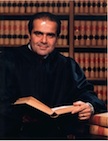 As we reflected on the various arguments observed over the week, the simple maxim: "Don't poke Scalia," emerged from the obvious danger related to angering a Supreme Court Justice, or any judge, or jury. Too often Supreme Court advocates insulted one of the justices with a sarcastic response, and found themselves fending off the attacks of a formidable opponent; not unlike a trial lawyer inadvertently angering jurors. The mistakes of Supreme Court advocates prompted us to identify primary principles that trial lawyers can learn from the Highest Court in the Land. These principles relate to areas of preparation, an understanding of one's audience, credible argumentation, and legal professionalism. While topically these areas may appear obvious, the mistakes we observed at the Supreme Court emphasize the difficulty surrounding the mastery of these principles. We hope our research and observations will help lawyers avoid future mistakes by adhering to the fundamental principles we discuss. So without further ado,
As we reflected on the various arguments observed over the week, the simple maxim: "Don't poke Scalia," emerged from the obvious danger related to angering a Supreme Court Justice, or any judge, or jury. Too often Supreme Court advocates insulted one of the justices with a sarcastic response, and found themselves fending off the attacks of a formidable opponent; not unlike a trial lawyer inadvertently angering jurors. The mistakes of Supreme Court advocates prompted us to identify primary principles that trial lawyers can learn from the Highest Court in the Land. These principles relate to areas of preparation, an understanding of one's audience, credible argumentation, and legal professionalism. While topically these areas may appear obvious, the mistakes we observed at the Supreme Court emphasize the difficulty surrounding the mastery of these principles. We hope our research and observations will help lawyers avoid future mistakes by adhering to the fundamental principles we discuss. So without further ado,
"Mr. Chief Justice and may it please the Court . . ."
Communication Matters
Oral argument before the Supreme Court is likely to be one of the most difficult communicative tasks humans engage in, but a trial lawyer's articulation of a complex case in an intelligible, engaging, and persuasive manner to a jury is an equally challenging feat. Like a jury, the justices must reach a conclusion that resolves the problem at hand, and they often look to the advocates for assistance in resolving the current and future potential cases. Some may argue that oral arguments serve as an empty ritual and believe that "oral arguments [do not] play a significant role in the decision making of the U.S. Supreme Court" (McGuire, 2005, pp.107-109) (Rhode and Spaeth, 1976; Segal and Cover, 1989; Segal and Spaeth, 1993; Segal and Spaeth, 2002). Skeptics may recognize the limited utility oral arguments hold in reversing a justice's tentative voting position, but communication influences human cognition in more subtle ways by impacting decision making within specific voting boundaries, such as in the writing of an opinion (Cohen 1978, Schubert et al. 1992, McGuire 1995, Songer and Lindquist 1996, Epstein et al. 2001, Johnson 2001, Johnson 2004, Johnson et al. 2006, Collins 2007, Wrightsman, 2008). While we do not necessarily subscribe to the notion that cases are won or lost in opening statement, the importance of framing a case at the beginning and tying it together at the end cannot be ignored. Similar to the debate about the importance of openings and closings, there may be disagreement regarding the influence of oral argument at the High Court, but perhaps most importantly, the justices themselves believe oral argument is a valuable activity that assists them in resolving complex issues. Just as Supreme Court justices view oral argument as a valuable activity for decision-making, juries also find instructive a lawyer's opening statement and closing argument that frame the case in an approachable fashion.
Lessons Learned
1. Comprehensive Preparation, Testing, Knowing your case and your opponent
Perhaps one of the most impressive aspects of elite Supreme Court advocates is their extensive preparation for oral arguments. Top advocates, such as David Frederick, Miguel Estrada, and Maureen Mahoney, spend between 80 and 100 hours preparing for their arguments, and argue before three to five moot courts, before ever appearing in front of the justices. A comprehensive knowledge of a case is crucial for these advocates to respond to any conceivable question the justices may ask. The persistent practice and delivery of arguments enables top advocates to reduce the essence of their case to a few sentences. Chief Justice Roberts recommends working "very hard on those first few sentences" when delivering opening remarks because "you're only guaranteed usually a minute, minute and a half before a justice is going to jump in," so "you want to convey exactly what you think the case turns on and why you should win . . . so they understand right from the beginning," your primary argument (Roberts 2006). We could not agree more. It is our view that if a lawyer cannot articulate in simple terms the essence of their case in four or five sentences, he or she does not properly understand the case.
Like Supreme Court justices, jurors need to grasp a basic understanding of the crucial elements of a case within the first few sentences in a lawyer's Opening Statement. Unfortunately, we often have seen lawyers, both in trial courts and before the Supreme Court, state their primary points at the very close of their available time. At this point, the primary arguments have been lost on the audience and are worth little to the effectiveness of your case. We witnessed this issue in Maryland v. Shatzer where petitioner's counsel delivered a stunningly clear and concise argument summary, capturing the essence of her argument, in the last remaining minutes of her allotted time. The justices, who had dismissed her early on because of an inability to answer their questions, were clearly struck by the clarity and compelling nature of her argument. Unfortunately, it occurred too late; the justices had already committed themselves against her arguments. The advocate had squandered a valuable opportunity at the opening of her argument, laying forth the case's facts, a topic the justices were already well versed in, instead of articulating the case's primary arguments.
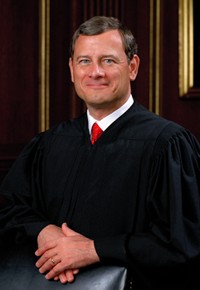 At Georgetown's Supreme Court Institute and at the National Association of Attorney Generals, advocates refine their arguments and test their persuasiveness, much like trial lawyers use focus groups or mock trials. At a minimum, focus groups and mock trials force lawyers to prepare arguments and statements earlier than usual. Despite the grumbling we often hear from our clients about preparing for a mock trial, they almost always appreciate it afterward, emerging more prepared to move forward and with a clearer view of their path to a positive resolution. Feedback from moot courts and focus groups allows lawyers to set the course for their case. Cases may have enticing areas the lawyer would initially prefer engaging, but that area may not appeal to judges or jurors. Like feedback from moot courts, trial lawyers need to rely on research from focus groups and mock trials to establish a course for their case.
At Georgetown's Supreme Court Institute and at the National Association of Attorney Generals, advocates refine their arguments and test their persuasiveness, much like trial lawyers use focus groups or mock trials. At a minimum, focus groups and mock trials force lawyers to prepare arguments and statements earlier than usual. Despite the grumbling we often hear from our clients about preparing for a mock trial, they almost always appreciate it afterward, emerging more prepared to move forward and with a clearer view of their path to a positive resolution. Feedback from moot courts and focus groups allows lawyers to set the course for their case. Cases may have enticing areas the lawyer would initially prefer engaging, but that area may not appeal to judges or jurors. Like feedback from moot courts, trial lawyers need to rely on research from focus groups and mock trials to establish a course for their case.
Once a lawyer gains an understanding of a case and establishes the strategy, the process of successfully navigating a case becomes easier, and judges and juries will be more likely to rely upon a lawyer who can articulate their case in a clear and concise manner. As Justice Kennedy has mentioned, "I've learned that judges really want your help," and we can assure you that juries both want and need a lawyer's help to make sense of their case (Kennedy 2006). Juries and judges so often are caught up in discerning complex ambiguous cases, and if lawyers can present them with a clear argument and direction early on, judges and juries will turn to the lawyer who presents the most comprehensible position by which they may understand the case.
2.Justices and Juries are Human
After the awe of the justices' entrance wears off, it becomes suddenly apparent that these nine men and women are supremely human. Although most nonagenarians would succumb to exhaustion Justice Stevens appears to be running on energizers; Justice Alito dozes off frequently; Justice Breyer shakes his head and shrugs his shoulders in silent disagreement; Justice Ginsburg struggles to be heard above the advocates and other justices; and Justice Scalia jests and jousts with advocates. 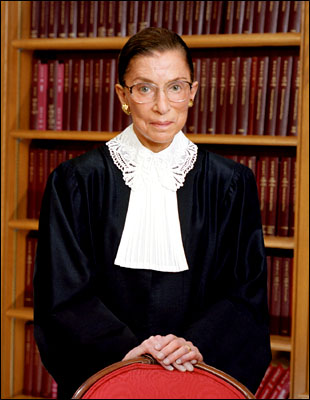 Justice Ginsburg fell asleep during oral argument for the Texas redistricting case, and was woken up after a number of minutes by a gentle hand from her friend Justice Souter1. Although the justices' human qualities are readily apparent to the audience, advocates often overlook this quality, caught up in their own arguments and a pressing time limit. Trial lawyers as well often forget about the boredom and general distraction that overcomes jurors.
Justice Ginsburg fell asleep during oral argument for the Texas redistricting case, and was woken up after a number of minutes by a gentle hand from her friend Justice Souter1. Although the justices' human qualities are readily apparent to the audience, advocates often overlook this quality, caught up in their own arguments and a pressing time limit. Trial lawyers as well often forget about the boredom and general distraction that overcomes jurors.
Maintaining a jury's attention and gaining jurors' trust requires making eye contact and delivering arguments in an entertaining and intelligible fashion. Legal jargon can cause juries to ignore arguments. Like reading Derrida, juries will often gloss over jargon, piecing together their own collage of a lawyer's statements in order to make sense of the case. At the Court, the language difference between justices and advocates is striking. Where the justices speak in plain language, the advocates sound as if they are bogged down in legalese, and the justices often struggle to clarify what an advocate means when using a certain term. Trial lawyers do not have the luxury of knowing what language confuses jurors and should remember to use plain language whenever possible. Trial lawyers must remain attentive to their audience, shaping their language accordingly. However, trial lawyers must be cautious about not falling into a pattern of stereotyping audiences, recognizing the unique qualities of the case and making sure they do not rely too heavily on how other jurors acted in prior cases. These same mistakes can be seen at the Supreme Court. The advocate for Bruono was not expecting Justice Breyer to be as supportive of his case, but Justice Breyer offered the counsel an alternative position to justify his claim that seemed to more closely reflect Justice Breyer's sentiments. The quotes from the article's opening also display the quick judgment of Justice Scalia by the advocates in Bruono and Stevens, and the advocates' improper behavior angered a justice who may have been less of a nuisance had they not poked him. Just as advocates must be careful to not anger justices, so too must trial lawyers ensure that they do not anger jurors.
Another example of dangerous judgment is the popular view that Justice Thomas is disengaged from oral arguments, because observers interpret his silence in oral arguments as indicative of his indifference to the case. Thomas last spoke on February 22, 2006 during oral arguments for Bowles v. South Carolina (Lithwick, 2007). As observers at oral arguments, we understand why critics misread Justice Thomas. He displays behavior suggestive of indifference: reclining in his chair, covering his eyes for a few minutes, or leaning forward with his hand on his forehead shielding his eyes. In the past, he frequently turned to Justice Breyer on his right or Justice Kennedy to his left and spoke as if he was not paying attention to oral arguments. He still speaks frequently to Justice Breyer, but now turns to Justice Scalia, since Justice Sotomayor joined the Court2. While his behavior could be interpreted by observers as indifference, he also intensely rifles through counsels' briefs, pointing out sections to nearby justices, and quietly arguing points. During our weeks of observation, Justice Thomas' behavior has appeared more indicative of careful reflection than bored indifference, attributing his silence to the belief "that if someone is talking, somebody should be listening" (AP, 2008). He understands that each justice has his or her own particular approach to oral argument, some justices "like to talk about it" other justices "enjoy the questioning and the back and forth" and other justices "think that if they listen deeply and hear the people who are presenting their arguments, they might hear something that's not already in several hundred pages of record" (Bredard, 2007).
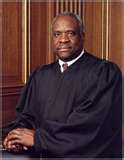 As critics have misjudged Justice Thomas, so too can trial lawyers misjudge jurors. Thomas will occasionally look up to hear an advocate's response to a question and advocates rarely look to make eye contact, writing Thomas off as lost cause. Trial lawyers cannot afford to ignore any juror because there is little way to know what influence a juror may hold over a jury. As the example of Justice Thomas identifies, we also strongly warn against predicting juror behavior based only on observation. Looks can be deceiving.
As critics have misjudged Justice Thomas, so too can trial lawyers misjudge jurors. Thomas will occasionally look up to hear an advocate's response to a question and advocates rarely look to make eye contact, writing Thomas off as lost cause. Trial lawyers cannot afford to ignore any juror because there is little way to know what influence a juror may hold over a jury. As the example of Justice Thomas identifies, we also strongly warn against predicting juror behavior based only on observation. Looks can be deceiving.
3.Don't take a non-credible position on a non-credible argument: Let the judge guide you
Lawyers regularly grapple with situations in which legal guidelines result in cumbersome and unreasonable consequences. Adopting a non-credible position, lawyers may dangerously ignore or fail to address the undesirable consequences, pointing to the propriety of the law as justification for their position; however, juries and justices are often less concerned with the black and white lettering of the law and more concerned with the practical consequences resulting from the application of the law. By confronting problematic issues, lawyers potentially resolve questions already present in jurors' minds, and gain credibility by both acknowledging deficiencies and offering remedies. But lawyers must have a proper understanding of the case, tested potential arguments, and identified weaknesses in their case, before properly addressing these problems. Maryland v. Shatzer fostered a perfect storm in which justices struggled between the letter and spirit of the law, and advocates had difficulty presenting credible arguments to non-credible positions.
In Maryland v. Shatzer, the Court explored whether police were prohibited from the re-interrogation of a suspect, who had previously invoked his rights to counsel and to remain silent, after a substantial amount of time had elapsed between the invocation of rights and subsequent interrogation. Because the issue in Shatzer revolved around the police's ability to practically conduct investigation, a prisoner's right to counsel, and the timeframe between events, advocates should have anticipated handling hypotheticals which tested the limits and extent of the controlling precedent in Edwards. Justice Alito posed a hypothetical to respondent's counsel, Ms. Davis, that explored the limitations of Edwards, and Ms. Davis was unable to provide a favorable response to a non-credible position:
Justice Alito: This is an area where it is very difficult to draw lines, at least I find it very difficult to draw lines. So let me start you out with an extreme hypothetical. . . .Someone is taken into custody in Maryland in 1999 and questioned for joyriding, released from custody, and then in 2009 is taken into custody and questioned for murder in Montana. Now at the time of the first questioning the suspect invokes the Fifth Amendment right to counsel. Now does the Edwards' rule apply to the second interrogation?
Ms. Davis: Yes it does Justice Alito. The Edwards ruling provides two ending points as it stands right now.
Justice Alito: And you don't think that's a ridiculous application of the rule? First of all, how are the authorities in Montana possibly going to know whether this person was interrogated previously on a crime for which the person was never convicted in Maryland and that invoked the right not to be questioned without an attorney? (U.S. 08-680 Maryland v. Shatzer) p. 30-1.
Ms. Davis clearly understands that the Edwards rule applies to her client and works in her client's favor, but Justice Alito's hypo exposes the rule's inherent difficulties and potential hindrance for authorities. Ms. Davis missed a crucial moment to offer the Court a compelling explanation for resolving foreseen difficulties surrounding the rule, but instead offered nothing and subsequently lost credibility before the justices. Appellate and trial lawyers alike must be prepared to address potential problems in their own cases and to resolve those issues for their audience, be it justice, judge, or juror. As Justice Breyer has mentioned "if the judge has a question and he doesn't get to say it, he's going to think about that question anyways," and so will a juror. Resolving issues and addressing problems in the audience's mind enables lawyers to frame the issue in a positive light and potentially gain the audience's trust.
If an advocate cannot offer a reasonable suggestion to a case's problems, then occasionally a favorable justice will lend a hand and provide assistance to an advocate by offering a potential solution or redirecting the course of questioning away from hostile arguments to more familiar territory. In Shatzer Justice Scalia rescued Mr. Heytens, petitioner's counsel, from a difficult round of questioning by Justices Stevens and Alito, by simply asking "you started to tell us why this case was important. Would you finish that?"(25). Justice Scalia also assisted Mr. Heytens in rejecting an unfavorable position presented by Justice Alito:
Mr. Heytens: That would certainly be open to the Court to say that Justice Alito. . .
Justice Scalia: Would it be a good idea to say that?
Mr. Heytens: I don't think it would be a good idea.
Justice Scalia: I thought we liked clear lines in this. I mean, the police won't know what to do. (23).
The assistance justices lend to advocates is not always recognized by the advocates. Similarly, trial lawyers may overlook the treatment by judges, either favorable or unfavorable. The psychological battle that we see between opposing counsels and the Court comes into play in one way or another in almost every case. These issues become more pronounced if the judge lacks control or understanding in the case, often looking to counsel for guidance. In this instance (and unfortunately we see it a lot), the side that gains control of the situation has the advantage. Conversely, when the judge has control of the courtroom and counsel, it is important for trial lawyers to have a keen sense of where they stand with the judge, and how the judge's view of them is impacting their case and more importantly the jury.
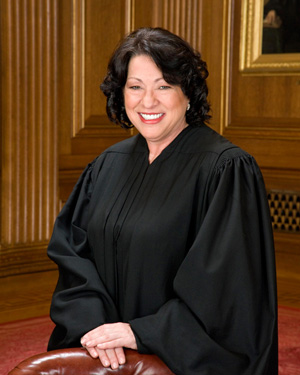 Standard Bearer of Values
Standard Bearer of Values
While the Court serves as a limited and highly specialized environment, it displays universal legal principles any lawyer would be wise to adopt, setting the standard for the conduct of law throughout the nation. Sanctity and civility imbue the justices' engagements with advocates and with each other. The amicable manner in which the justices treat each other is surprising given the ideological divides that separate them and the difficult issues with which they must wrestle. However, in many trial courtrooms, we have seen a decline in respectful behavior, such as trial counsel wandering in and out of the courtroom, Starbucks cup in hand while the judge is on the bench. Regardless of counsel's view of the judge, they should always remain respectful of the legal system. At the Highest Court in the Land, top advocates' sense of respect informs their engagements with justices as well as their understanding of the case, because the two elements are intertwined within the legal system. Advocate's respect for their case and the justices enables them to deftly respond to any question a justice may ask. We understand all too well that litigation is a fast-moving world, often with little time to prepare, but jurors sense and subsequently punish an unprepared lawyer. The Court's symbol, a turtle, reminds us of the slow and deliberate pace of Justice. Too often the courtroom is reduced to a competition resulting in winners and losers with prized legal victories in the hundreds of millions, instead of a concern for justice rendered. The Court remains an ideal, reminding both our citizenry and our legal community that Justice should always be our primary purpose.
Standing in line for the Court at midnight is an experience. Depending upon the case, you may be one of the first in line, though some cases require observers to arrive days in advance. The Court always reserves seats for the public and this open policy attracts a wide swath of America. Among those in line are law students, tourists, special interest groups, lawyers, the homeless, housewives, and high school students. As a group we stand waiting to be ushered through the golden doors of the marble temple, and into the courtroom where images of angels and great lawgivers surround us. We gaze at depictions of the innocent and wicked judged by ethereal figures. Within this sacred legal temple, it is difficult to imagine that this court receives petitions from prisoners scrawled on toilet paper, as well as amicus curiae from the President, or that the Court's words may grant both freedom and death to America's citizens. The Supreme Court stands as a place where, emblazoned above the entry, "Equal Justice Under Law," promises Justice to Americans and offers guidance to the legal community, because "Justice," as the Court's West entrance declares, is the "Guardian of Liberty." And, while we should not forget, we often lose sight that it is for liberty that our legal community serves.
"Now if there are no further questions, I would like to reserve the remainder of my time . . .."
Tara Trask [tara@taratrask.com] is a Trial Consultant with Tara Trask and Associates based in San Francisco, CA. and Dallas, TX. She does primarily civil work and has worked in venues across the country. Ms. Trask's full service practice includes all types of complex litigation including intellectual property, products liability, insurance and securities. You can read more about Ms. Trask on her firm's website [http://www.taratrask.com].
Ryan Malphurs (rmalphurs@taratrask.com) is an Associate Litigation Consultant for Tara Trask and Associates. A PhD candidate in the Communication department at Texas A&M University, Ryan has observed nearly fifty oral arguments before the U.S. Supreme Court in pursuit of his research regarding the cognitive influence of communicative interaction between the justices and advocates. His background enables him to provide traditional research services through focus groups, and mock trials, guiding clients through theme development, trial strategies, witness preparation, and jury selection, but his experience at the Supreme Court also makes him uniquely situated to advise and prepare advocates who are appearing before appellate courts.
Endnotes
1 A variety of bloggers covered this piece but the major media outlets failed to mention it. See Whitlock (2006).
2 Some have suggested that Justice Thomas is discussing the results of the latest baseball game with Justice Kennedy or Breyer, but I spoke with one of the clerks who regularly sits behind the three justices and she explained that they only talk legal issues regarding the case and she's never heard a conversation revolving around any other topic.
References
AP. (2008). Thomas silent as Supreme Court talks on and on. CNN.com, 2/25, 1-2.
Bredard, P. (2007). 'This is Not Perry Mason.' U.S. News & World Report. 11/30, 1-2.
Breyer, S.G. (2006). Supreme Court. Lawprose.org. 10/1/2008.
Brennan, W.J. (1967) Harvard Law School Occasional Pamphlet 9. 22-23.
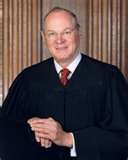
Cohen, D.S. (1978). Judicial predictability in the United States Supreme Court advocacy: an analysis of the oral argument. University of Puget Sound Law Review, 2, pp. 89-136.
Collins, P.M. (2007). Lobbyists before the U.S. Supreme Court: Investigating the influence of amicus curiae briefs. Political Research Quarterly, 60.1, pp. 55-70.
Edwards v. Arizona, 451 U.S. 477 (1981).
Epstein, L. Segal, J. A., & Spaeth H.J. (2001). The Norm of Consensus on the U.S. Supreme Court. American Journal of Political Science, 45.2, pp. 362-377.
Hughes, C.E. (1928). The Supreme Court of the United States pp. 61.
Johnson, T.R., Wahlbeck, P.J., & Spriggs, J.F. (2006). The Influence of Oral Arguments on the U.S. Supreme Court American Political Science Review, 100.1, pp. 99-113.
Johnson, T.R. (2004). Oral Arguments and Decision Making on the United States Supreme Court New York: New York Press.
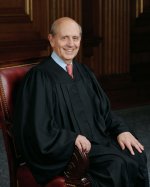
Johnson, T.R. (2001). Information, oral arguments, and Supreme Court decision making. American Politics Research, 29.4, pp. 331-351.
Kennedy, A. (2006). Supreme Court. Lawprose.org. 10/1/2008.
Lee, R.E. (1986). Oral Argument in the Supreme Court. American Bar Association Journal 72.6 pp. 60-3.
Lithwick, D. (2007). Open Books: Why Supreme Court justices' speeches are less important than oral arguments. Slate.com. 11/30, 1-3.
Maryland v. Shatzer. 08-680 (2009).
McGuire, K. T. (1995). Repeat players in the Supreme Court: The role of experienced lawyers in litigation success. The Journal of Politics, 57.1, pp. 187-196.
McGuire, K. T. (2005) Oral Arguments and Decision Making on the United States Supreme Court, by Timothy Johnson. Law and Politics, 15.2, 107-109.
Rhode, D.W & Spaeth, H.J. (1976). Supreme Court Decision Making. San Francisco: W.H. Freeman.
Roberts, J. (2006). Supreme Court. Lawprose.org. 10/1/2008.
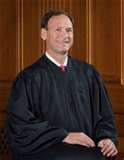
Salazar v. Bruono U.S. 08-472. (2009).
Schubert, J.N., Peterson, S.A., Schubert, G. & Wasby, S. (1992). Observing Supreme Court oral argument: A biosocial approach. Politics and Life Sciences, 11.1, pp. 35-51.
Segal, J.A. & Spaeth, H.J. (2002). The Supreme Court and the attitudinal model revisited. New York: Cambridge UP.
Segal, J.A. & Cover, A.D. (1989). Ideological values and Votes of U.S. Supreme Court Justices. American Political Science Review, 83, pp. 557-565.
Segal, J.A. & Spaeth, H.J. (1993). The Supreme Court and the Attitudinal Model. New York: Cambridge UP.
Segal, J., & Spaeth, H. (2002). The Supreme Court and the attitudinal model revisited. Cambridge: Cambridge UP.
Songer, D.R. & Lindquist, S.A. (1996). Not the whole story: The impact of justice's values on Supreme Court decision making. American Journal of Political Science, 40.4, 1049-63.
Supreme Court rule 38.1.
United States v. Stevens. 08-769. (2009).
Whitlock, S. (2006). Ginsburg Falls Asleep. NewsBusters.org 4/2/2006. www.newsbusters.org. Accessed 9/20/07.
Wrightsman, L. (2008). Oral Arguments before the Supreme Court. London: Oxford UP.
Citation for this article: The Jury Expert, 21(6), 46-52.
This is a fantastic article that has some excellent points for any oral advocate. If I may add my two cents from observing several Supreme Court cases over the past few years, I have to say that Justice Alito's questions tend to be the ones, in my mind, on which the cases tend to turn. I do not agree with the man's politics but whenever I am reading a transcript or listening to oral arguments Justice Alito always seems to be the one asking the most difficult questions, the kind where if the advocate can answer that one question he or she will have gotten most of the justices on his or her side. Put another way, Alito always seems to know exactly how and when to jump to the most difficult issue in the arguments that I've watched or read. And as this article demonstrates, flubbing a question from Justice Alito can have disastrous consequences.
Howard Wasserman has done a blog post on this article: Howard's blog post
Adam Chandler of SCOTUS blog has done a post on this article: Adam's blog post
Neal Katyal was not "poking" Justice Scalia, he was being respectful. Justice Scalia has a well-known, firm position that legislative history should not be utilized in statutory construction. Other judges do not have that view. Katyal was acknowledging that his argument from legislative history was not properly addressed to Justice Scalia, but was offering it to persuade justices who do not share his views. Justice Scalia probably reacted to the audience reaction rather than to Katyal's comment. Katyals is a skilled and very appropriate and respectful oral advocate.
RT @TheJuryExpert “Don’t Poke Scalia!” Lessons for Trial Lawyers from the Nation’s Highest Court http://t.co/g6pNt93NaX
RT @KKComCon: RT @TheJuryExpert “Don’t Poke Scalia!” Lessons for Trial Lawyers from the Nation’s Highest Court http://t.co/g6pNt93NaX
RT @KKComCon: RT @TheJuryExpert “Don’t Poke Scalia!” Lessons for Trial Lawyers from the Nation’s Highest Court http://t.co/g6pNt93NaX